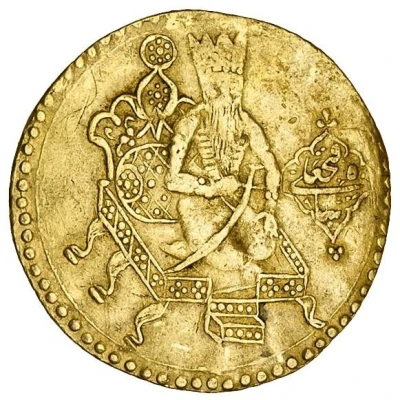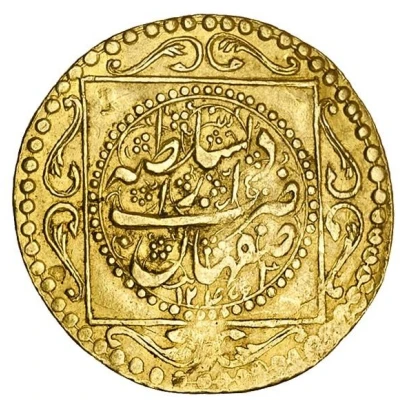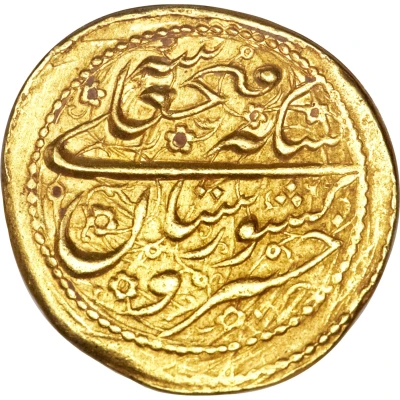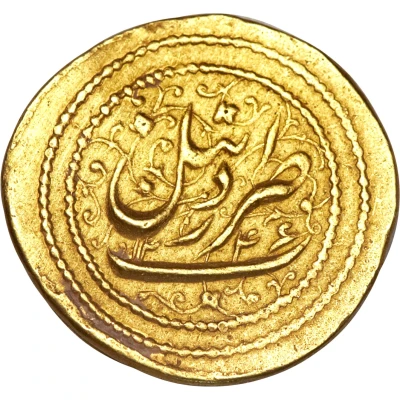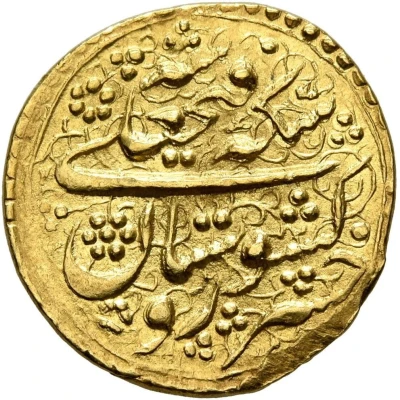
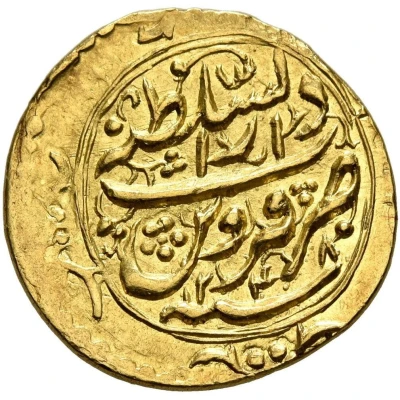

© Leu Numismatik
1 Toman "Kashverestan" - Fath-Ali Shah Qazvin
| Gold | 3.45 g | 18 mm |
| Issuer | Iran |
|---|---|
| Shah | Fath-Ali Shah (1797-1834) |
| Type | Circulating commemorative coin |
| Years | 1246-1249 (1830-1833) |
| Calendar | Islamic (Hijri) |
| Value | 1 Toman (تومان) (10) |
| Currency | Qiran (1825-1932) |
| Composition | Gold |
| Weight | 3.45 g |
| Diameter | 18 mm |
| Shape | Round (irregular) |
| Technique | Hammered (Die alignment: 7h) |
| Orientation | Variable alignment ↺ |
| Demonetized | Yes |
| Updated | 2024-10-05 |
| Numista | N#423295 |
|---|---|
| Rarity index | 100% |
Reverse
Inscription with mint name and date, within inner circle.
Script: Persian (nastaliq)
Lettering:
ضرب دارالسّلطنه قزوین
سنه ۱۲۴۸
Lettering (regular font):
ضرب دارالسّلطنه قزوین
سنه ۱۲۴۸
Translation: zarb-e dār al-salṭana Qazwīn sana 1248 (Struck in the abode of the sultanate Qazwin, year 1248).
Comment
Album uses the denomination “toman” for the gold coin which changed in weight throughout Fath Ali Shah's reign from 6.14 gr. AH1212-1213 (Type R coinage) down to 4.61 gr. AH1240-1245 (Type X coinage, A2868).
He calls this later type at 3.45 gr. a Type Y keshverestan rather than a toman, possibly because tomans of Fath Ali SHah's successor begin at 3.84 gr. (A2903)
Interesting fact
One interesting fact about the 1 Toman "Kashverestan" - Fath-Ali Shah (Qazvin) 1246-1249 (1830-1833) gold coin from Iran is that it features a unique blend of Islamic and Persian architectural elements on its design. The obverse side of the coin showcases the bust of Fath-Ali Shah, while the reverse side features a stunning depiction of the Imam Mosque in Isfahan, which was built during the Safavid dynasty and is considered one of the finest examples of Islamic architecture in Iran. This blend of historical and cultural elements makes the coin a fascinating piece of numismatic history.
